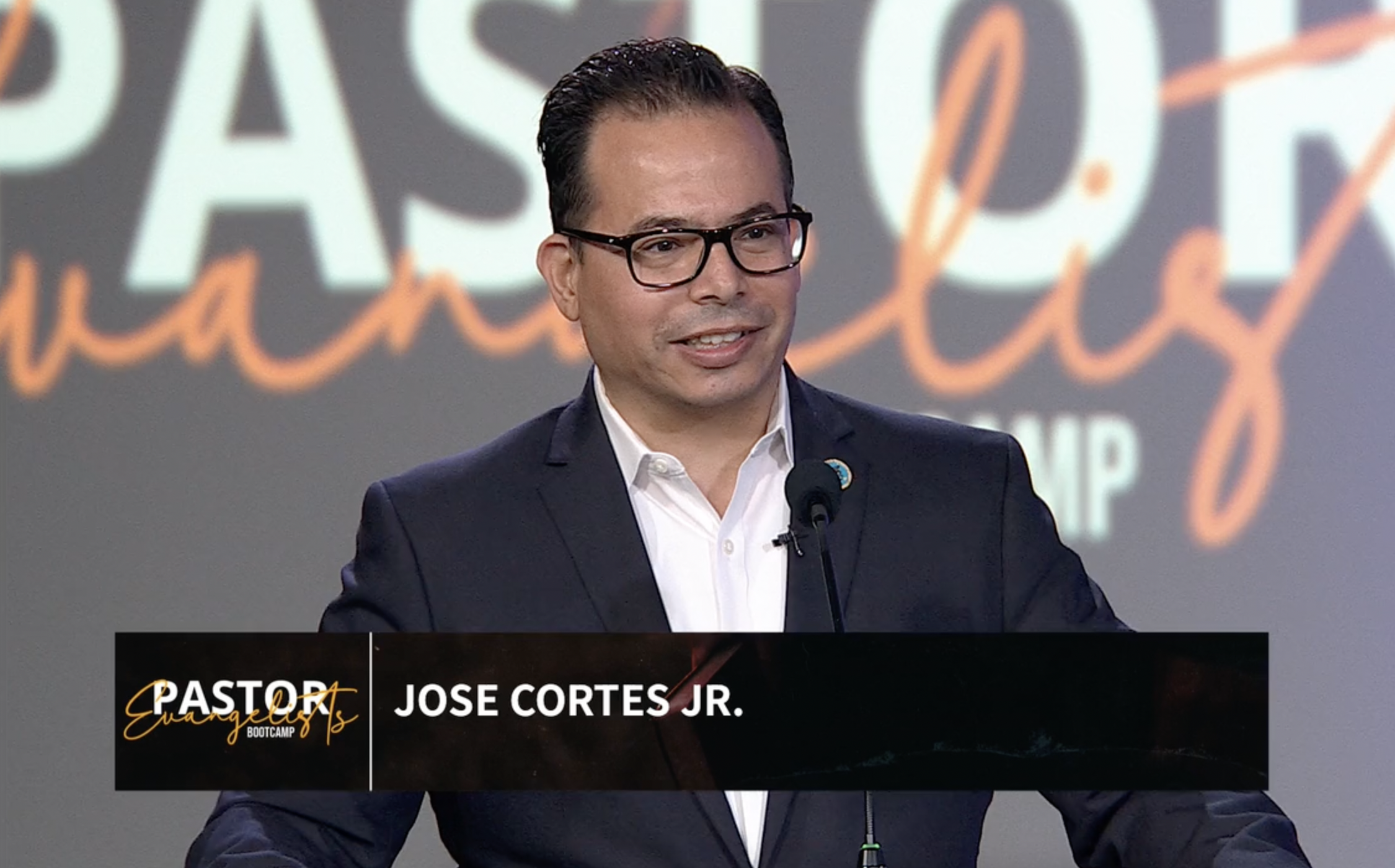Fue un tiempo desafiante para la iglesia. Había persecución. Santiago, el líder de la iglesia, asesinado. Pedro, el evangelista, fue encarcelado y liberado milagrosamente. Según las reseñas de Hechos, había carencias económicas y tensiones raciales, por lo que se eligieron a diáconos para cuidar de las viudas gentiles, que sentían que no recibían la misma atención que los demás. Fue un tiempo difícil para la iglesia primitiva, sin embargo, existe este versículo:
” La palabra del Señor crecía y el número de los discípulos se multiplicaba…”
Es un tiempo desafiante para la iglesia. Todavía nos encontramos bajo una pandemia, y la gente aún está muriendo de COVID. Algunos están sufriendo dificultades económicas. La división política entre las naciones que forman la División Norteamericana es clara, con máscaras o sin máscaras, vacunas o sin vacunas, las afiliaciones políticas nunca han sido más polarizantes y fijas. Las tensiones raciales prevalecen en las grabaciones de incidentes muy gráficos y públicos. Sin embargo, todavía está este verso:
” La palabra del Señor crecía y el número de los discípulos se multiplicaba…”
¿Y si lo que pasó con ellos pudiera pasar con nosotros? ¿Qué pasaría si Dios tuviera la misma intención de bendecir a nuestra iglesia norteamericana de la manera en que bendijo a la iglesia primitiva, a pesar de las dificultades y los desafíos? ¿Qué pasaría si nosotros, como iglesia, creyéramos que el mismo poder del Espíritu Santo que estuvo presente en el nacimiento de la iglesia todavía está disponible hoy? ¿Podría Dios hacer a través de nosotros lo que hizo a través de ellos?
Nuestra iglesia en Norteamérica está orando colectivamente y visualizando una temporada de crecimiento y multiplicación con la seguridad de que el mismo Dios del pasado todavía está obrando, y que el poder del Espíritu Santo, disponible en aquel entonces, todavía está disponible hoy. De seguro, si Dios lo hizo con ellos, lo puede hacer con nosotros también.
Quizás te preguntas ¿por qué multiplicarnos?
1.Las Personas Necesitan Aceptar a Jesús y ser Bautizadas
Las personas, las familias, los vecinos, los compañeros de trabajo y de clase que nos rodean necesitan a Jesús. Quieren aceptarlo como Salvador y Señor, y quieren ser bautizados. El libro de Hechos registra el bautismo de uno, y también registra el bautismo de miles. Cada vez que uno o miles se bautizaban, significaba que se cambiaban vidas, se recibía esperanza y la salvación llegaba a la vida de los bautizados. Las personas en Norteamérica todavía necesitan salvación, esperanza y vidas cambiadas hoy, y a nosotros, como iglesia, se nos ha dado la responsabilidad de liberar a las personas que nos rodean.
2. Las Personas necesitan Ser Equipadas
La gran comisión de Jesús no terminó con el bautismo. Cristo mencionó y modeló la necesidad de más equipamiento y liberación después del bautismo. Él dijo:
“Por tanto, vayan y hagan discípulos de todas las naciones, bautizándolos en el nombre del Padre y del Hijo y del Espíritu Santo, enseñándoles a obedecer todo lo que les he mandado a ustedes. Y les aseguro que estaré con ustedes siempre, hasta el fin del mundo.”
-Mateo 28:19-20 (NVI)
Una indicación clara para permanecer con nuestros bebés espirituales cuando toman su primer aliento en su nacimiento espiritual. Quizás, una de las varias razones por las que perdemos unas cuarenta personas de cada cien que se bautizan en nuestras iglesias es porque no nos quedamos con ellas después de su nacimiento. Eso no está bien. Se necesita que nazcan bebés en el reino. Cuando los bebés nacen, son desordenados, necesitan ayuda, necesitan que alguien los sostenga, los alimente, los enseñe y los ayuden a crecer, para que puedan llegar a ser discípulos maduros, reproductores y multiplicadores de discípulos, así como lo somos nosotros.
La jornada del discipulado no es solo para los recién bautizados, sino también para aquellos como nosotros, que hemos estado en el reino durante mucho tiempo. Nosotros los que sentimos que, quizás, poque conocemos nuestras creencias y vamos a la iglesia, sea física o virtualmente, somos discípulos. El discipulado va más allá del conocimiento intelectual, las reuniones y el cuidado. Un discípulo no es alguien que va a talleres y seminarios y tiene todo este conocimiento cultivado. Un discípulo es alguien que ama a la gente y hace otros discípulos.
Para que la palabra de Dios se multiplique, el evangelio debe pasar de un discípulo a otra persona, que nacerá de nuevo y se equipará como discípulo. Y ese proceso milagroso debe ser repetido.
3.La Gente Necesita Acceso a Jesús en sus Comunidades
Este es un llamado para plantar iglesias. Hay personas en Norteamérica que no tienen acceso a Jesús a través de una de nuestras iglesias. Plantar nuevas iglesias pone en mejor posición a nuestra iglesia para alcanzar a las personas que no hemos alcanzado antes.
La mayoría de las iglesias establecidas no crecen, pero las que crecen obtienen la mayoría de sus nuevos miembros mediante transferencias de otras congregaciones. Por otro lado, las iglesias nuevas generalmente bautizan en un porcentaje más alto que las iglesias ya establecidas y obtienen el sesenta al ochenta por ciento de sus nuevos miembros de personas que no asistían a ninguna iglesia.
Aunque es difícil de aceptar, las iglesias adventistas más establecidas tienen dificultad para llegar a la generación milenaria, la generación Z, las madres solteras, quienes junto con su hogar se han convertido en uno de los grupos de personas más grandes de Norteamérica. Las iglesias adventistas más antiguas también luchan por llegar a la comunidad LGBTQ+ y a los grupos de inmigrantes que están emergiendo. Plantar nuevas iglesias con un ADN diferente puede ayudar a llegar a personas a las que nuestras iglesias ya establecidas actualmente no están alcanzando.
Jesús no predicó un evangelio exclusivo. Él fundó una iglesia inclusiva. Si nuestra iglesia solo puede llegar a personas que piensan como nosotros, visten como nosotros, comen como nosotros, huelen como nosotros y adoran como nosotros, nunca podrá llegar a los que son diferentes. Jesús vino a salvarlos también. Necesitamos ser más como Jesús.
No plantemos una iglesia más para nosotros. Plantemos iglesias para ellos. ¿Quiénes son ellos? Los que aún no están aquí: nuestros hijos, las madres solteras, los que han sido rechazados, los que no hemos estado alcanzando.
El hecho de que tengamos una iglesia hoy significa que alguien plantó una iglesia ayer. Necesitamos plantar una iglesia hoy si queremos que nuestros hijos, y las futuras generaciones, tengan una iglesia mañana.
4. Miles de Iglesias Adventistas en Norteamérica se Están Estancando y Declinando
Si observamos el ciclo de vida de las iglesias, podemos notar que, al igual que los humanos, las iglesias tienen una longevidad de unos 80-100 años. A menos que sean revitalizadas, cada iglesia eventualmente se estancará y decaerá. Aunque algunas pueden haber llegado a un punto en el que la revitalización pueda ser difícil, tenemos esperanza y creemos que la gran mayoría de nuestras iglesias en Norteamérica pueden convertirse en iglesias que crecen y se multiplican.
Esta es la razón por la cual, durante esta temporada de Multiplícate, nuestra iglesia en Norteamérica ha comprometido múltiples recursos en forma de investigación, herramientas, de medida de la salud, finanzas y equipamiento, para resaltar la importancia de ver que la salud de nuestras iglesias madre y abuela mejore.
Lanzamiento del Sitio Web de Multiplica
Para apoyarte en la jornada de Multiplícate, estamos felices de anunciar el lanzamiento de nuestro sitio web Multiplícate, así como la transición de este boletín de Mejores Prácticas de Evangelismo a Multiplícate. Nuestro objetivo es proveer recursos prácticos semanales para ti, como pastor y líder en todas las cosas relacionadas a Multiplícate, y en todas las cosas relacionadas al evangelio.
No dudes en recomendar a otros, darnos tu opinión y solicitar los recursos que necesitas. Haremos todo lo posible para cumplir con tus solicitudes.
Vivimos en tiempos muy difíciles, aun así, está Su versículo:
” La palabra del Señor crecía y el número de los discípulos se multiplicaba…”
Que lo mismo que se dijo de la iglesia primitiva, se diga de nosotros. “Fue duro, fue difícil, pero la palabra de Dios creció y se multiplicó…”
El Pastor José Cortés Jr. es Director Asociado de la Asociación Ministerial, y dirige Evangelismo, Plantación de Iglesias, Revitalización de Iglesias, Misión en las Ciudades, Misión Adventista/Global y Pastores Laicos en la División Norteamericana de la Iglesia Adventista del Séptimo Día.













